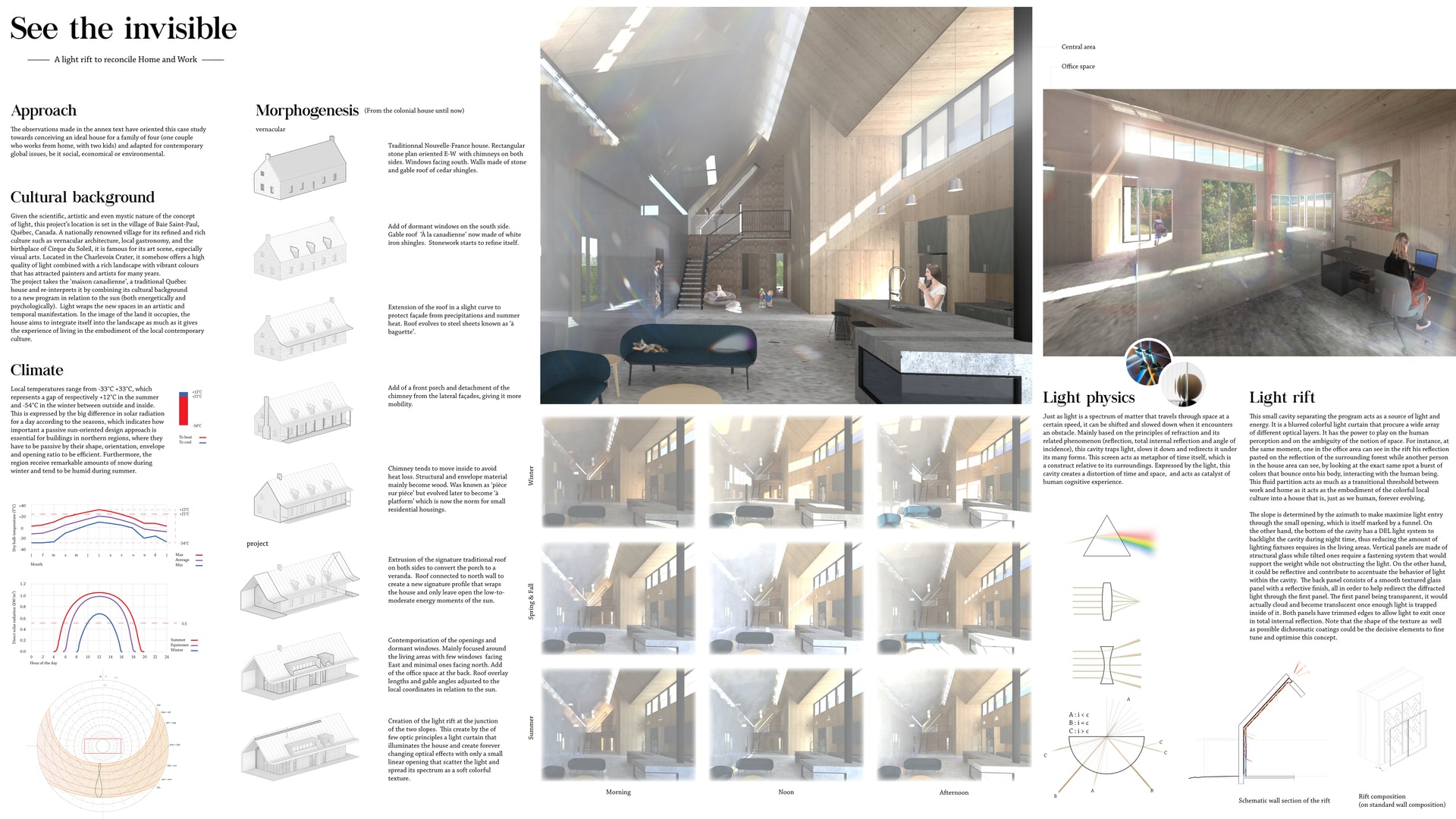Project Description
GENERAL LIGHT ISSUES The sun is our primary source of energy as it feeds the Earth and orders our seasons. It is our source of light, from the biological needs of living organisms to the base stimuli upon which humans experience and perceive the world. It influences how we feel and even what we consider reality. This intangible relation, as what we see with our human eyes, is not the light itself but the refraction from our surroundings. It is even at the base of our social behaviour: we wake up as the sun rises; are active when the sun is at its highest; enjoy social life when it goes down in a show of warm colours and gradually revolve back to our beds as it disappears from our sight - to repeat the same cycle. This relation is amplified during Nordic winters, as the sun is so little present that it affects the mood of everyone. The sun is also the main cause of daily temperature shifts, which accentuate discomfort in ill-suited buildings and engenders greater energy waste to regulate comfort. On top of all of that, the new decade quickly brought the world to certain understandings regarding our species' health, economical ideology, environmental considerations as well as social behaviour. Amongst these changes, work-at-home became a standard. Its benefits, from reducing transit time with all its related issues (such as environmental, economical, sociological and temporal) and allowing workers to spend more time with their loved ones, has also created issues, such as reduced productivity and a generalised difficulty for workers to define the line between what is work, and what is home. APPROACH These observations have oriented this case study towards conceiving an ideal house for a family of four (one couple who works from home, with two kids) and adapted for contemporary global issues, be it social, economical or environmental. CULTURAL BACKGROUND Given the scientific, artistic and even mystic nature of the concept of light, this project’s location is set in the village of Baie Saint-Paul, Québec, Canada. A nationally renowned village for its refined and rich culture such as vernacular architecture, local gastronomy, and the birthplace of Cirque du Soleil, it is famous for its art scene, especially visual arts. Located in the Charlevoix Crater, it somehow offers a high quality of light combined with a rich landscape with vibrant colours that has attracted painters and artists for many years. The project takes the ‘maison canadienne’, a traditional Québec house and re-interprets it by combining its cultural background to a new program in relation to the sun (both energetically and psychologically). Light wraps the new spaces in an artistic and temporal manifestation. In the image of the land it occupies, the house aims to integrate itself into the landscape as much as it gives the experience of living in the embodiment of the local contemporary culture. PROJECT The house is first adapted to a new program with the add-on of the office spaces revisiting this relation between work and home, keeping in mind the relation between human and sun. It is then formally optimised to highlight the sun (proportions, roof, windows and passivhaus design) and evolved from its traditional form in accordance to the sun path and local climate. This approach is nonetheless a basic pretext meets context scenario. The house is a study of the potential of light. How it can create or divide space and create evolving ambiances and moods throughout the day, seasons and year. By working with few materials and physical proprieties such as reflection, refraction and more precisely, total internal reflection and the angle of incidence, it is possible to channel the light from a small opening (which reduces heat loss). The light is then trapped inside and becomes a new malleable material. This conductor then carries the light to other areas and finally releases it, scattering it all over the interior spaces and thus revealing soft arrays of colours that bounce off the interior, in a forever-changing natural painting and metaphor of the passing time that allows us to see the invisible. CONCLUSION There is great fascination for engaging environments that stimulate the mind and energise the body. It has the power to play on the human perception and on the ambiguity of the notion of space. Light is an ongoing source of inspiration that is, just like us, forever evolving, at least, on a point of human perception.
